[Editor’s Note: The Army’s Mad Scientist Laboratory is pleased to feature the next in a series of posts excerpting findings from Team Axis Insight 2035‘s Project Deterrence Final Report. This Integrated Research Project documents the findings from the group’s United States Army War College (USAWC) Strategic Research Requirement portion of the Master of Strategic Studies degree program that occurred over the academic year (from November 2024 to April 2025).
 Team Axis Insight 2035 consisted of COL Byron N. Cadiz, COL T. Marc Skinner, LTC Robert W. Mayhue, LTC Lori L. Perkins, and LTC Shun Y. Yu — all U.S. Army Officers and now proclaimed Army Mad Scientists! Team Axis Insight 2035‘s Project Deterrence Final Report documents their collective response to the following question posed by Ian Sullivan, Deputy Chief of Staff, G-2, U.S. Army Training and Doctrine Command:
Team Axis Insight 2035 consisted of COL Byron N. Cadiz, COL T. Marc Skinner, LTC Robert W. Mayhue, LTC Lori L. Perkins, and LTC Shun Y. Yu — all U.S. Army Officers and now proclaimed Army Mad Scientists! Team Axis Insight 2035‘s Project Deterrence Final Report documents their collective response to the following question posed by Ian Sullivan, Deputy Chief of Staff, G-2, U.S. Army Training and Doctrine Command:
How are China, Russia, Iran, and North Korea likely to respond to U.S.-led deterrence efforts by 2035?
Last month, the Mad Scientist Laboratory excerpted Team Axis Insight 2035‘s finding regarding “an entangled future of situational cooperation and transactional inter-dependence among China, Russia, Iran, and North Korea” in Project Deterrence — An Entangled Future. In today’s post, we excerpt their finding addressing how our adversaries are exploiting emergent disruptive technologies in their quest to achieve battlefield overmatch — Read on!]
Threat Vector #2: Disruptive Technologies
China is driving the development and integration of nearly all disruptive technologies, which include quantum warfare, drone swarms, hypersonic missiles, and metamaterial stealth, with Russia advancing primarily in hypersonic weapons. North Korea and Iran remain marginal players, contributing little to innovation but potentially exploiting regional instability enabled by Chinese and Russian breakthroughs.
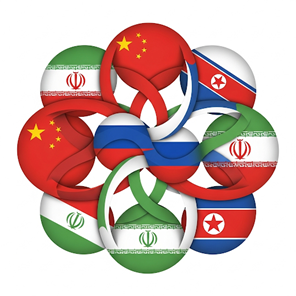 By 2035, China and Russia are almost certain* to exploit integrated disruptive technologies to initiate rapid, theater-specific campaigns that challenge U.S. deterrence and compress response timelines. China will likely* attempt to seize Taiwan under the cover of quantum-enabled command and control and multi-domain disruption, while Russia is likely* to target NATO’s eastern flank. Iran and North Korea may opportunistically escalate in their regions, though with lower confidence and at more limited scale, aiming to test U.S. bandwidth and regional influence during a crisis.
By 2035, China and Russia are almost certain* to exploit integrated disruptive technologies to initiate rapid, theater-specific campaigns that challenge U.S. deterrence and compress response timelines. China will likely* attempt to seize Taiwan under the cover of quantum-enabled command and control and multi-domain disruption, while Russia is likely* to target NATO’s eastern flank. Iran and North Korea may opportunistically escalate in their regions, though with lower confidence and at more limited scale, aiming to test U.S. bandwidth and regional influence during a crisis.
Emerging technologies will highly likely* degrade U.S. and allies’ advantages in sensing, speed, and decision-making while compressing escalation timelines across all domains. Forward-deployed assets will likely* become increasingly vulnerable to first-strike operations; intelligence, surveillance, and reconnaissance (ISR) blind spots are likely* to emerge across key theaters, leading to decision paralysis during early-phase conflict scenarios. Adversary integration of four future capabilities is likely* to create an environment where U.S. deterrence is neutralized: quantum warfare, swarm supremacy, hypersonic strike, and metamaterials.
Quantum Warfare

China is almost certain* to exploit breakthroughs in quantum communications and decryption to disrupt allied decision superiority by 2035. The People’s Liberation Army (PLA) has operationalized the Micius quantum satellite and invested over $15.3 billion in national quantum research and development, which enables secure internal networks and quantum key distribution resistant to cyberattack.
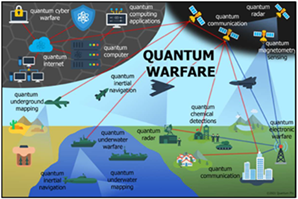
These capabilities are almost certain* to compromise encryption, intercept ISR feeds, and fragment alliance coordination through denial and deception (see figure to the right). As early warning networks are corrupted, the speed and reliability of U.S. command and control are almost certain* to degrade. In response to a perceived window of strategic distraction around 2035, such as a U.S. domestic crisis or simultaneous regional escalation, China is almost certain* to exploit its quantum advantage to disable allied communications in the opening phase of a cross-strait conflict. The PLA is almost certain* to use quantum-secured command and control networks to blind ISR systems, degrade early warning, and fragment alliance coordination through denial and deception. This is highly likely* to occur in the Indo-Pacific, centered on Taiwan and surrounding maritime terrain, where rapid action can achieve strategic objectives before full U.S. and allied mobilization. By masking the origin of data disruption and exploiting ambiguity, Beijing is almost certain* to operate beneath traditional deterrence thresholds, achieving key military objectives without triggering an immediate and unified U.S. response.
Swarm Supremacy
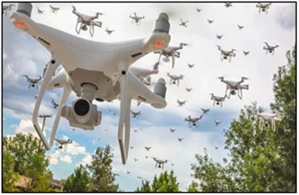
By 2035, China is likely* to achieve carrier-based and littoral air superiority through artificial intelligence-enabled drone swarm deployments operating from Type-076 amphibious ships and other swarm-capable platforms. These systems enable massed attacks exceeding 100 drones per sortie, are likely* to be able to neutralize high-value targets such as the F-35C and E-2D through saturation tactics and electronic warfare payloads. U.S. naval assets operating near Taiwan or the South China Sea are almost certain* to be persistently exposed to unmanned precision strikes coordinated by artificial intelligence and BeiDou satellite networks. As a result, U.S. denial-based deterrence anchored in carrier strike groups and forward presence will likely* lose its coercive leverage. China is likely* to employ drone swarms to enforce air and sea exclusion zones, overwhelm early-warning systems, and constrain U.S. ability to deploy strike assets into contested zones, asserting regional control through unmanned dominance before escalation occurs.
Hypersonic Strike
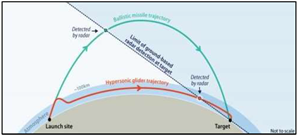
China and Russia are almost certain* to use hypersonic weapons to constrain U.S. and allied decision-making windows below conflict thresholds by 2035. PLA hypersonic missiles, like the DF-ZF and JF-22 testbed, and Russian Avangard and Tsirkon missiles travel at speeds exceeding Mach 5, executing unpredictable trajectories and evading missile defenses (see figure above). These weapons are likely* to allow adversaries to hold critical infrastructure, airfields, and command and control nodes at risk with sub-six-minute strike timelines. Forward bases in Guam, Okinawa, and Eastern Europe are likely* to become indefensible. In this environment, Russia and China are almost certain* to integrate hypersonic missiles into preemptive options 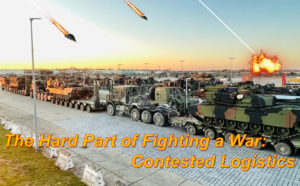 designed to delay or disable allied responses before they materialize. U.S. extended deterrence credibility is likely* to erode as adversaries assess that decision paralysis will prevent timely retaliation, allowing gains to be secured in the opening minutes of a campaign.
designed to delay or disable allied responses before they materialize. U.S. extended deterrence credibility is likely* to erode as adversaries assess that decision paralysis will prevent timely retaliation, allowing gains to be secured in the opening minutes of a campaign.
Metamaterials
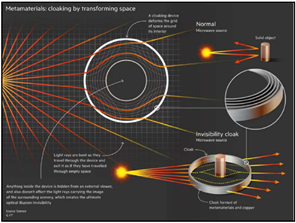 By 2035, China is highly likely* to field metamaterial-based platforms that evade ISR detection across radar, thermal, and acoustic spectrums (see figure to the right). These materials have already been patented and field-tested, reduce radar cross-sections by up to 50%, and improve platform survivability by decreasing weight and signature. Once fielded, the PLA will operate stealth fighters, drones, and hypersonic systems across the Western Pacific without triggering ISR alarms. These effects eliminate the preparatory indicators U.S. planners use to identify imminent offensive action. As warning time is removed from the deterrence equation, China is highly likely* to reposition missile systems, stage amphibious forces, and maneuver unmanned assets
By 2035, China is highly likely* to field metamaterial-based platforms that evade ISR detection across radar, thermal, and acoustic spectrums (see figure to the right). These materials have already been patented and field-tested, reduce radar cross-sections by up to 50%, and improve platform survivability by decreasing weight and signature. Once fielded, the PLA will operate stealth fighters, drones, and hypersonic systems across the Western Pacific without triggering ISR alarms. These effects eliminate the preparatory indicators U.S. planners use to identify imminent offensive action. As warning time is removed from the deterrence equation, China is highly likely* to reposition missile systems, stage amphibious forces, and maneuver unmanned assets 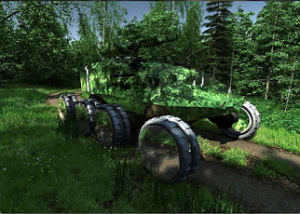 under ISR blackout conditions. Beijing is almost certain* to assess that metamaterials offer the operational cover needed to delay allied response, invalidate pre-crisis detection frameworks, and seize initiative without presenting early signs of aggression, neutralizing deterrence before conflict formally begins.
under ISR blackout conditions. Beijing is almost certain* to assess that metamaterials offer the operational cover needed to delay allied response, invalidate pre-crisis detection frameworks, and seize initiative without presenting early signs of aggression, neutralizing deterrence before conflict formally begins.
If you enjoyed this post, check out Axis Insight 2035‘s comprehensive Project Deterrence Final Report here.
Review the TRADOC Pamphlet 525-92, The Operational Environment 2024-2034: Large-Scale Combat Operations
Explore the TRADOC G-2‘s Operational Environment Enterprise web page, brimming with authoritative information on the Operational Environment and how our adversaries fight, including:
Our China Landing Zone, full of information regarding our pacing challenge, including ATP 7-100.3, Chinese Tactics, How China Fights in Large-Scale Combat Operations, BiteSize China weekly topics, and the People’s Liberation Army Ground Forces Quick Reference Guide.
Our Russia Landing Zone, including the BiteSize Russia weekly topics. If you have a CAC, you’ll be especially interested in reviewing our weekly RUS-UKR Conflict Running Estimates and associated Narratives, capturing what we learned about the contemporary Russian way of war in Ukraine over the past two years and the ramifications for U.S. Army modernization across DOTMLPF-P.
Our Iran Landing Zone, including the Iran Quick Reference Guide and the Iran Passive Defense Manual (both require a CAC to access).
Our North Korea Landing Zone, including Resources for Studying North Korea, Instruments of Chinese Military Influence in North Korea, and Instruments of Russian Military Influence in North Korea.
Our Irregular Threats Landing Zone, including TC 7-100.3, Irregular Opposing Forces, and ATP 3-37.2, Antiterrorism (requires a CAC to access).
Our Running Estimates SharePoint site (also requires a CAC to access) — documenting what we’re learning about the evolving OE. Contains our monthly OE Running Estimates, associated Narratives, and the quarterly OE Assessment TRADOC Intelligence Posts (TIPs).
Then read the following related Mad Scientist Laboratory content addressing each of these emergent disruptive technologies:
Quantum Warfare:
Quantum Surprise on the Battlefield? by proclaimed Mad Scientist Elsa Kania
Quantum Conundrum: Multi-domain Threats, Convergent Technology & Hybrid Strategy, by Robert McCreight
Swarm Supremacy:
Jomini’s Revenge: Mass Strikes Back! by proclaimed Mad Scientist Zachery Tyson Brown
Revolutionizing 21st Century Warfighting: UAVs and C-UAS
The PLA and UAVs – Automating the Battlefield and Enhancing Training
Hypersonic Strike:
The Need for Speed (and Maneuverability), by Seth Gnesin
The Hard Part of Fighting a War: Contested Logistics
Metamaterials:
Metamaterial Magic: Demystifying the Science of Cloaking and associated podcast, with Dr. Andrea Alù
Disruptive Technologies and the Operational Environment:
Winning the Future: The U.S. Military’s Need for Technological Dominance and Defined Strategic Vision, by proclaimed Mad Scientist Dr. James Giordano and Elise Annett
Emergent Global Trends Impacting on the Future Operational Environment
Imagining the Future Fight through Emerging Technology and associated podcast, with Jenny McArdle, Cmdr. Paul Grøstad, and Whitney McNamara
Table of Future Technologies: A 360 Degree View Based on Anticipated Availability, by Richard Buchter
* Kesselman List of Estimative Words:
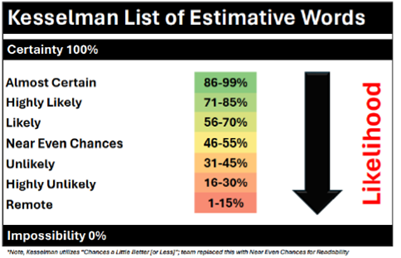
Disclaimer: The views expressed in this blog post are those of the author, and do not necessarily reflect those of the Department of Defense, Department of the Army, Army Futures Command (AFC), or Training and Doctrine Command (TRADOC).



